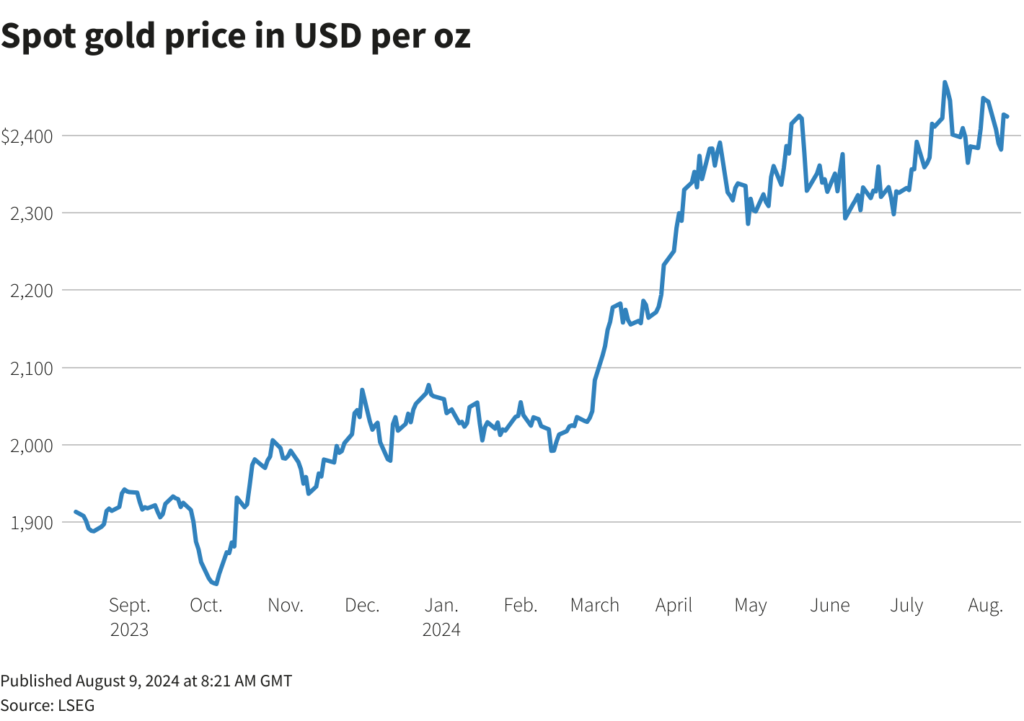
For the week, bullion is still down about 0.8%, on track for its biggest weekly decline since June 7. Prices fell as much as 3% on Monday as part of a broader equities market sell-off, prompting a three-day losing streak.
Gold then rallied on Thursday after new US labor data that showed applications for unemployment benefits fell by the most in nearly a year, boosting optimism that the Federal Reserve may be able to achieve safe landing with its monetary easing.
Thursday’s gains also put gold within touching distance of the record it reached last month. The precious metal has risen about 18% this year, largely on expectations the US central bank would soon deliver rate cuts.
Other factors supporting gold’s upward trajectory include increased purchases from central banks and Chinese consumers, along with haven buying due to conflicts in the Middle East and Ukraine.
“Heightened volatility, elevated geopolitical risks, recession worries, and expected rate cuts have gotten gold to current levels and eaten into our conviction around urging caution” in buying bullion, RBC Capital Markets analysts, including Helima Croft, said in a note to Bloomberg.
“We maintain a positive view on gold as a diversifier hedge against turmoil elsewhere,” Ole Hansen, head of commodity strategy at Saxo Bank, also said in a Reuters interview.
“In the medium term, the outlook for gold remains positive, with any dips likely to be short-lived due to underlying macroeconomic factors,” stated Zain Vawda, market analyst at MarketPulse by OANDA.
“Yesterday’s US jobless claims data eased recession concerns, boosting gold prices. Additionally, comments from the Fed this week have supported the notion that rate cuts may be forthcoming,” he added.
(With files from Bloomberg and Reuters)

